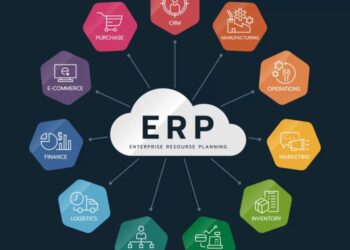Delve into the world of ERP MRP software, where efficiency meets innovation. Discover how businesses can revolutionize their operations and decision-making processes with this powerful tool.
Explore the integration of ERP and MRP systems, the key features that drive success, and the benefits that await those who embrace this technology.
Introduction to ERP MRP Software
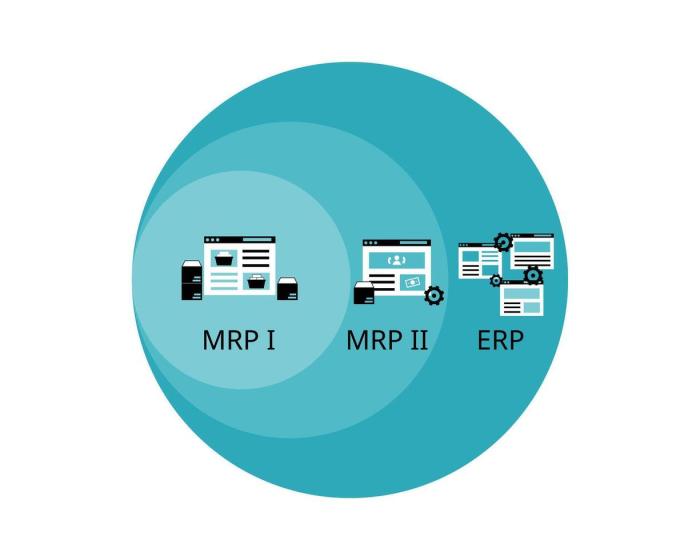
ERP MRP software is a system that integrates both Enterprise Resource Planning (ERP) and Material Requirements Planning (MRP) functions into a single software solution. This integration allows businesses to streamline their operations, enhance efficiency, and improve overall productivity.
Difference between ERP and MRP systems
ERP systems focus on managing various aspects of a business, such as finance, human resources, sales, and inventory. On the other hand, MRP systems specifically deal with managing materials and production scheduling. While ERP systems provide a holistic view of the entire organization, MRP systems are more focused on optimizing material availability for production.
Significance of integrating ERP and MRP for businesses
Integrating ERP and MRP systems allows businesses to synchronize their planning and execution processes. This integration enables real-time data sharing between departments, enhances collaboration, and ensures accurate forecasting of material requirements. By combining ERP and MRP functionalities, businesses can achieve better resource utilization, reduced lead times, and improved customer satisfaction.
Key Features of ERP MRP Software
ERP MRP software is a powerful tool that combines the functionalities of Enterprise Resource Planning (ERP) and Material Requirements Planning (MRP) systems to streamline operations and enhance efficiency in manufacturing and distribution processes.
Inventory Management
ERP MRP software offers robust inventory management features that allow businesses to effectively track and control their inventory levels. This includes real-time visibility into stock levels, automated reorder points, and accurate demand forecasting to optimize inventory levels and reduce carrying costs.
Production Process Streamlining
By integrating production planning and scheduling functionalities, ERP MRP software helps businesses improve production processes by optimizing resource allocation, reducing lead times, and enhancing overall productivity. This ensures that production runs smoothly and efficiently, meeting customer demands effectively.
Implementation of ERP MRP Software
Implementing ERP MRP software is a crucial process that requires careful planning and execution to ensure success. Below, we will discuss the steps involved in implementing ERP MRP software, common challenges faced during implementation, and provide tips for a successful deployment.
Steps Involved in Implementing ERP MRP Software
- Conduct a thorough analysis of current business processes and requirements to identify areas where the software can add value.
- Select a suitable ERP MRP software solution that aligns with your business needs and goals.
- Develop a detailed implementation plan outlining tasks, timelines, and responsibilities for each phase of the implementation process.
- Customize the software to meet specific business requirements through configuration and integration with existing systems.
- Train employees on how to use the software effectively to maximize its benefits and ensure smooth adoption.
- Conduct testing to identify and resolve any issues or discrepancies before fully implementing the software.
- Go live with the ERP MRP software and monitor its performance to ensure it meets the desired outcomes.
Common Challenges Faced During ERP MRP Software Implementation
- Resistance to change from employees who are accustomed to existing processes and systems.
- Data migration issues when transferring data from legacy systems to the new ERP MRP software.
- Lack of executive and stakeholder buy-in, leading to delays or roadblocks in the implementation process.
- Inadequate training and support for employees to effectively use the new software.
- Integration challenges with other systems or third-party applications.
Tips for a Successful ERP MRP Software Deployment
- Involve key stakeholders from the beginning to ensure alignment with business goals and objectives.
- Provide comprehensive training and support to employees at all levels to encourage adoption and effective use of the software.
- Regularly communicate with employees about the implementation process, addressing concerns and providing updates to maintain transparency.
- Allocate sufficient time and resources for testing and quality assurance to identify and resolve any issues before full implementation.
- Monitor and evaluate the software's performance post-implementation to make necessary adjustments and improvements for optimal results.
Benefits of Using ERP MRP Software
ERP MRP software offers numerous advantages for businesses, ranging from improved operational efficiency to enhanced decision-making processes.
Improved Operational Efficiency
- Streamlined Processes: ERP MRP software integrates various departments and functions within a company, reducing manual tasks and eliminating duplicate data entry.
- Real-Time Data: The software provides up-to-date information on inventory levels, production schedules, and customer orders, allowing for better planning and resource allocation.
- Automation: Routine tasks such as order processing, invoicing, and inventory management can be automated, saving time and reducing errors.
- Enhanced Collaboration: With a centralized system, employees can collaborate more effectively, leading to better communication and decision-making.
Impact on Decision-Making Processes
- Access to Insights: ERP MRP software generates detailed reports and analytics, providing valuable insights into business performance, trends, and opportunities.
- Improved Accuracy: By having accurate and real-time data at their fingertips, managers can make more informed decisions quickly and effectively.
- Strategic Planning: The software enables businesses to align their operations with strategic goals, identify areas for improvement, and respond to market changes promptly.
- Cost Savings: Through better inventory management, resource utilization, and forecasting capabilities, companies can reduce costs and improve profitability.
Comparison of ERP MRP Software Options
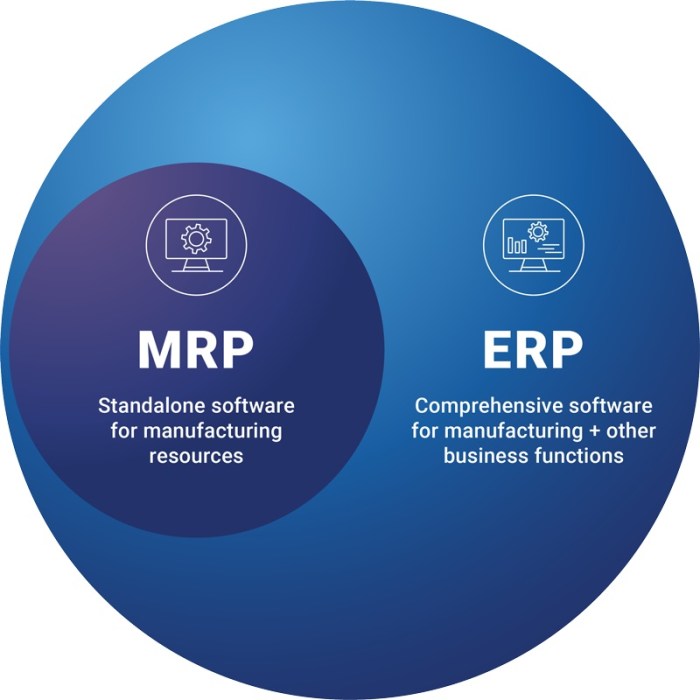
In today's market, there are several ERP MRP software solutions available, each with its own unique features and benefits. When choosing the right software for your business, it is essential to compare different options based on their scalability, cost-effectiveness, and overall suitability for your specific needs.
Scalability of ERP MRP Software Products
When evaluating ERP MRP software options, scalability is a crucial factor to consider. Scalability refers to the software's ability to grow and adapt to the changing needs of your business. Some key points to consider when assessing scalability include:
- Flexibility to accommodate increasing data volumes and users
- Ability to integrate with other systems and applications as your business expands
- Support for multi-site or multi-company operations
Cost-Effectiveness of Different ERP MRP Software Options
Cost-effectiveness is another important aspect to consider when comparing ERP MRP software solutions. While the initial cost of implementation is a significant factor, it is essential to look beyond that and consider the long-term costs associated with each option. Some factors to evaluate for cost-effectiveness include:
- Licensing fees and subscription costs
- Implementation and training expenses
- Maintenance and support fees
- Upgrades and customization costs
Conclusion
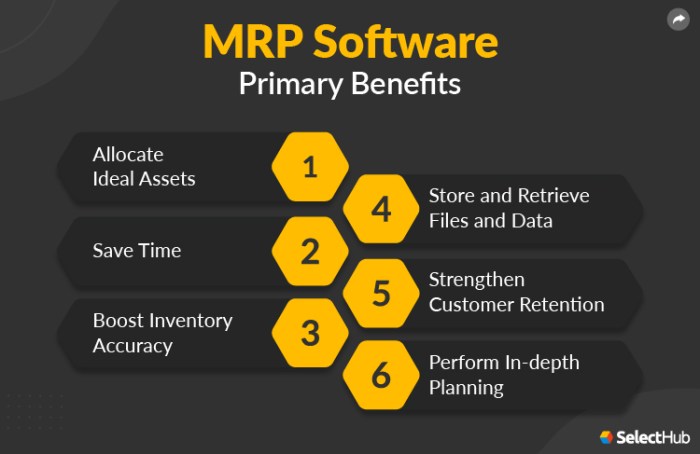
In conclusion, ERP MRP software stands as a game-changer in the realm of business management. From enhancing operational efficiency to facilitating strategic decision-making, this software is a must-have for companies looking to thrive in today's competitive landscape.
FAQ Explained
What is the main difference between ERP and MRP systems?
ERP focuses on integrating all aspects of a business, while MRP specifically deals with production planning and inventory control.
How does ERP MRP software improve operational efficiency?
By providing real-time data integration and automation of processes, ERP MRP software streamlines operations and reduces manual tasks.
What are some common challenges faced during ERP MRP software implementation?
Challenges may include data migration issues, resistance from employees to adapt to new systems, and the need for extensive training.
How scalable are ERP MRP software products?
ERP MRP software can be scaled according to the needs of the business, allowing for flexibility and growth without significant disruptions.
Are ERP MRP software options cost-effective for businesses?
While initial costs may vary, the long-term benefits of improved efficiency and decision-making often outweigh the initial investment.

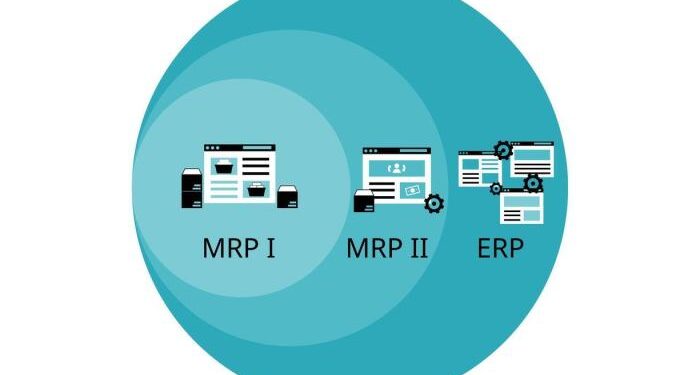






![Best Construction ERP Software [2024 Edition]](https://health.bandungnews.id/wp-content/uploads/2025/10/Top-10-Best-Construction-ERP-Software-to-Use-in-2024-1-120x86.jpg)


